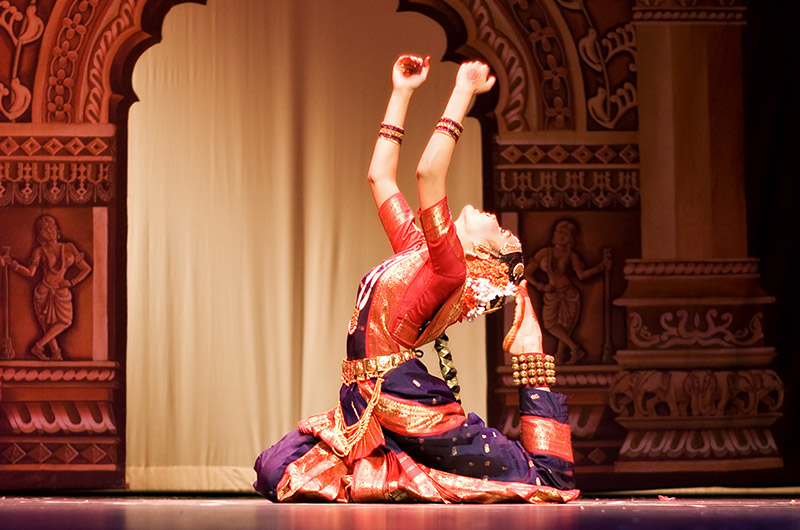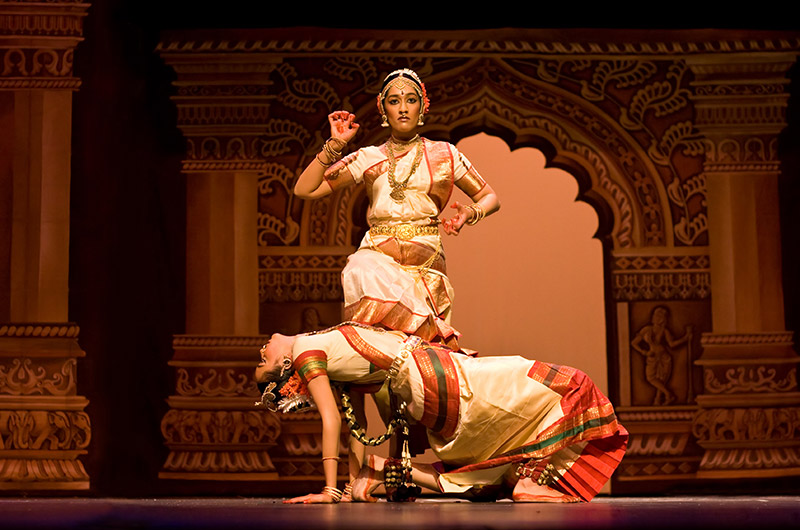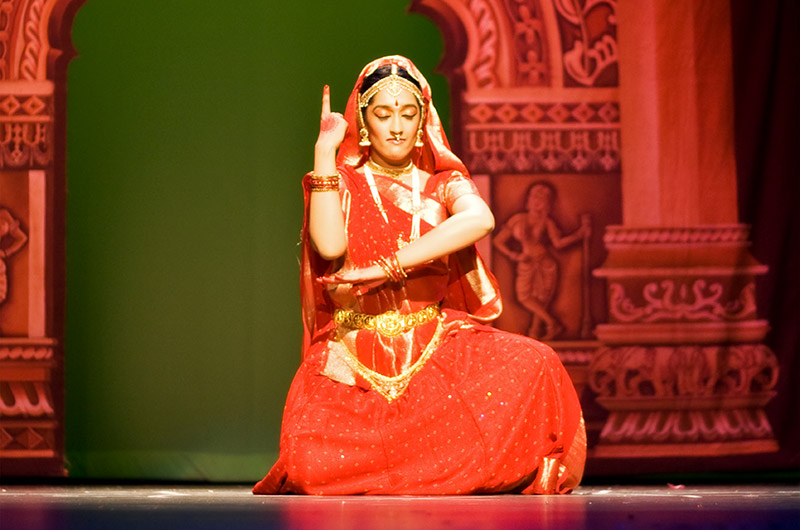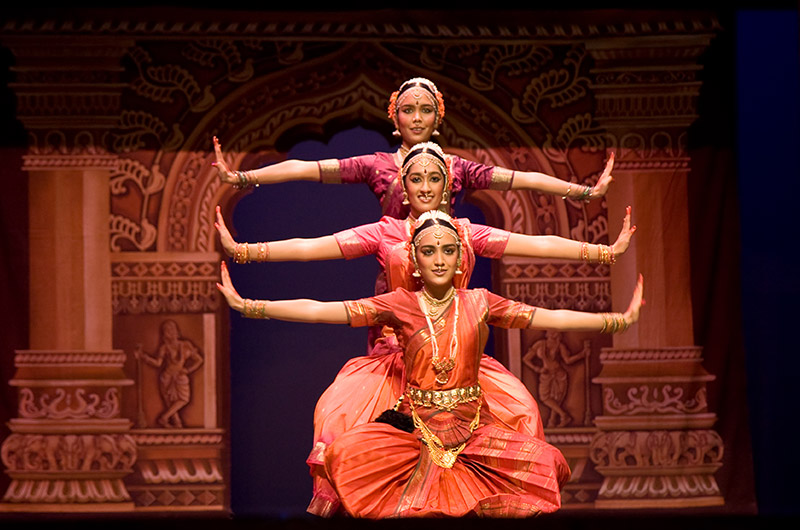
Poorvi Patel is seen here during her Padam of Bho Shambho, a dance depicting devotion towards Lord Shiva. The Padam is the dance that puts all of the dancers qualities or abinaya to the test. It is an expression of divine love or the pangs of separation in love. Padams are of two elements, Nayaka is the hero, lover, or divine lord and Nayika is the heroine or yearning soul. Abinaya is described with four elements, communicating the meaning of the songs using the body, i.e. head, hands, legs, etc., communicating the story using narrations, use of costumes, jewelry, and make-up, and the expression of moods. The above pose from Poorvi elicited an enthusiastic round of applause from the audience impressed with the graceful move.




